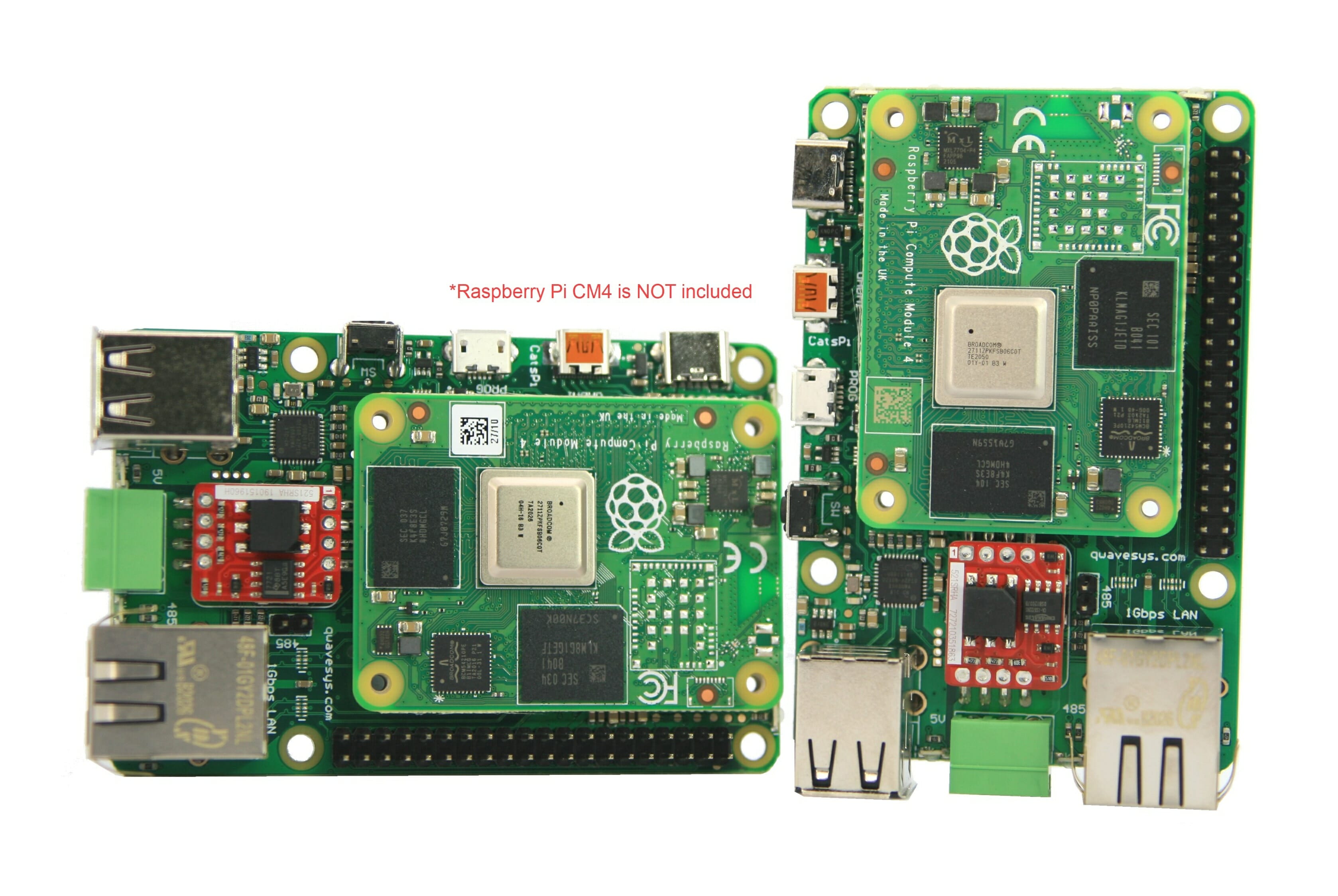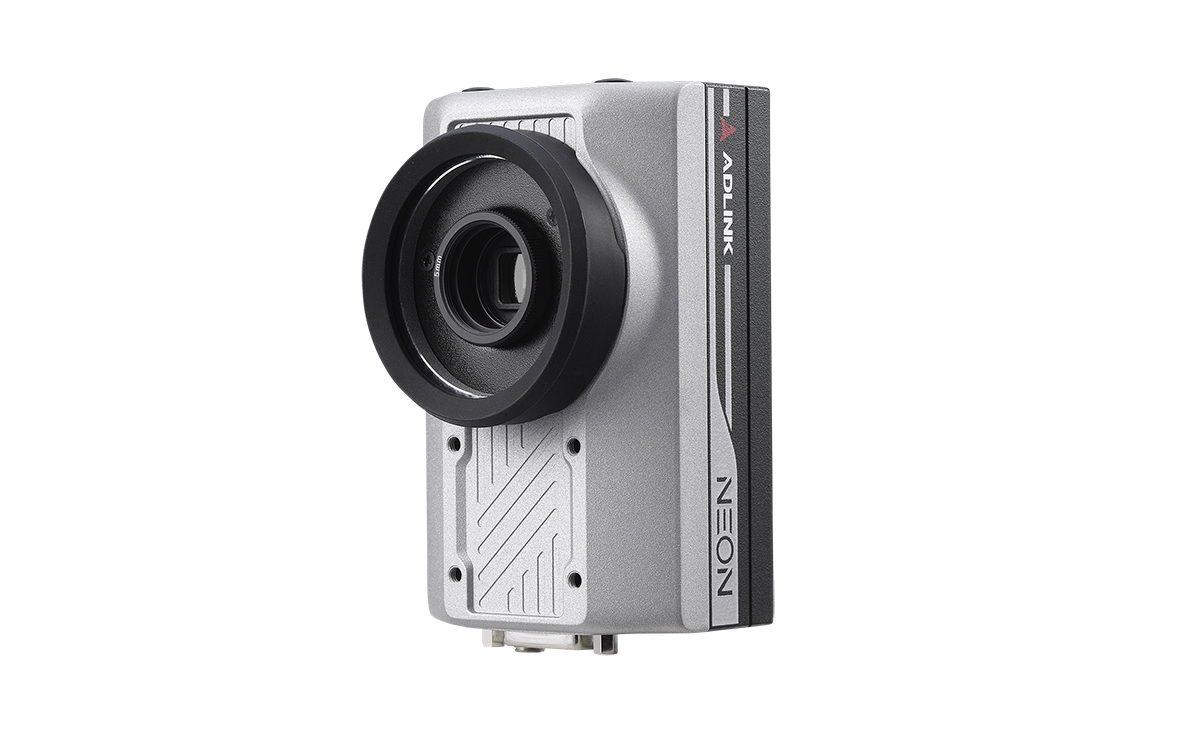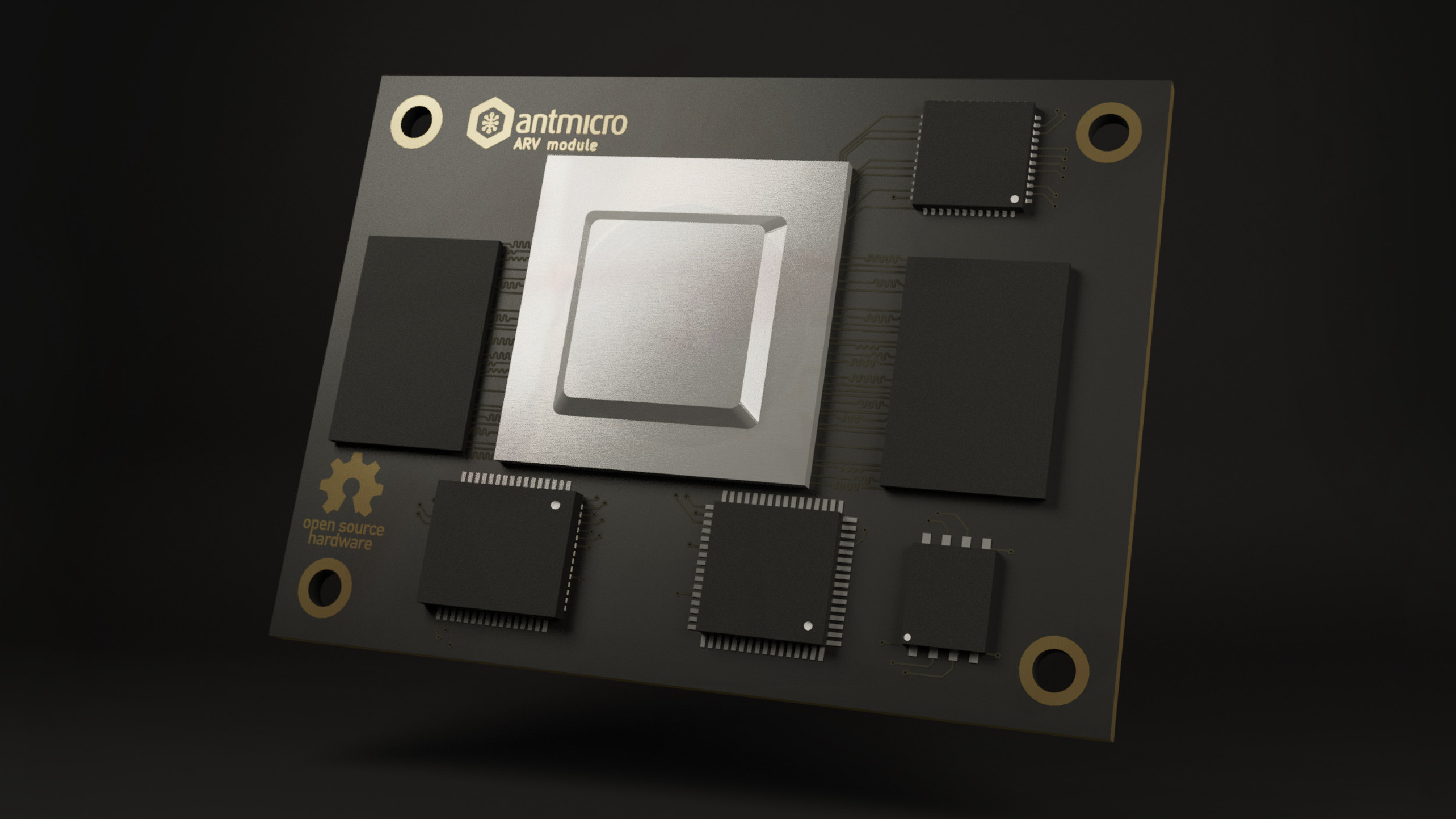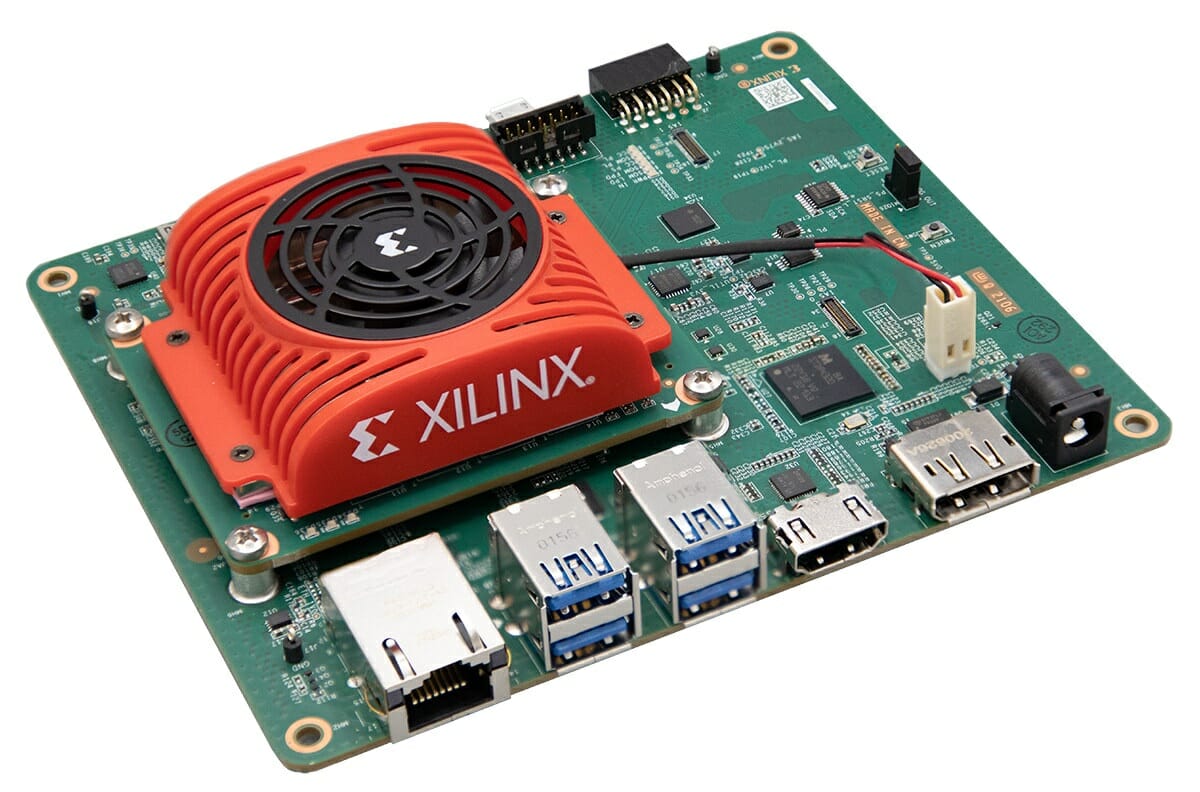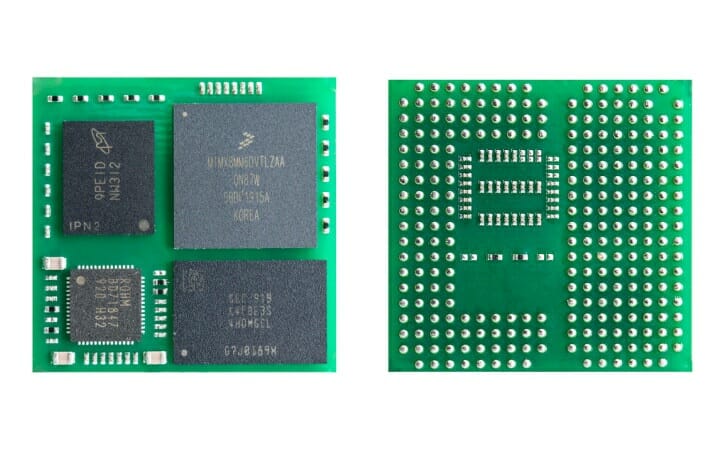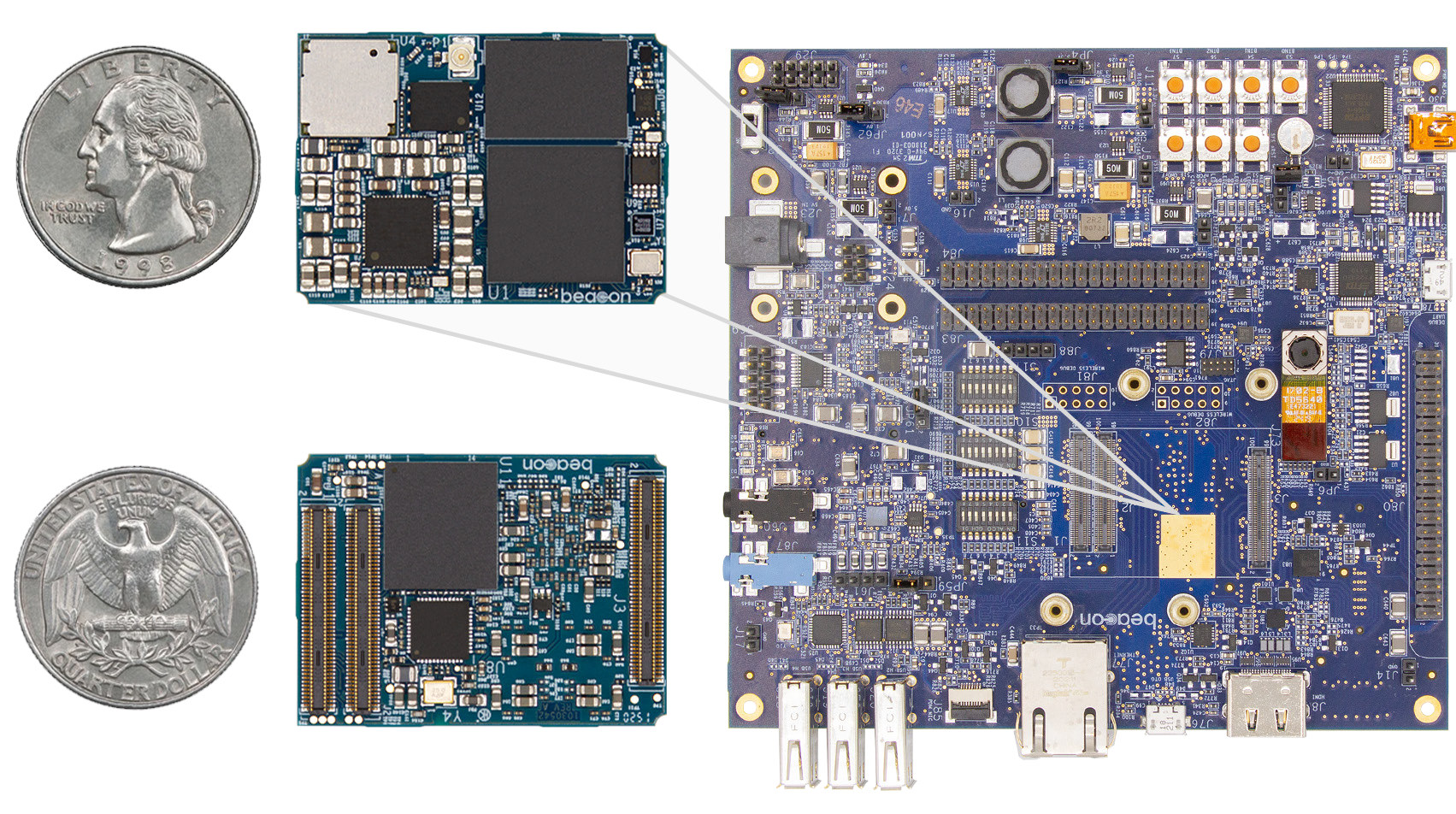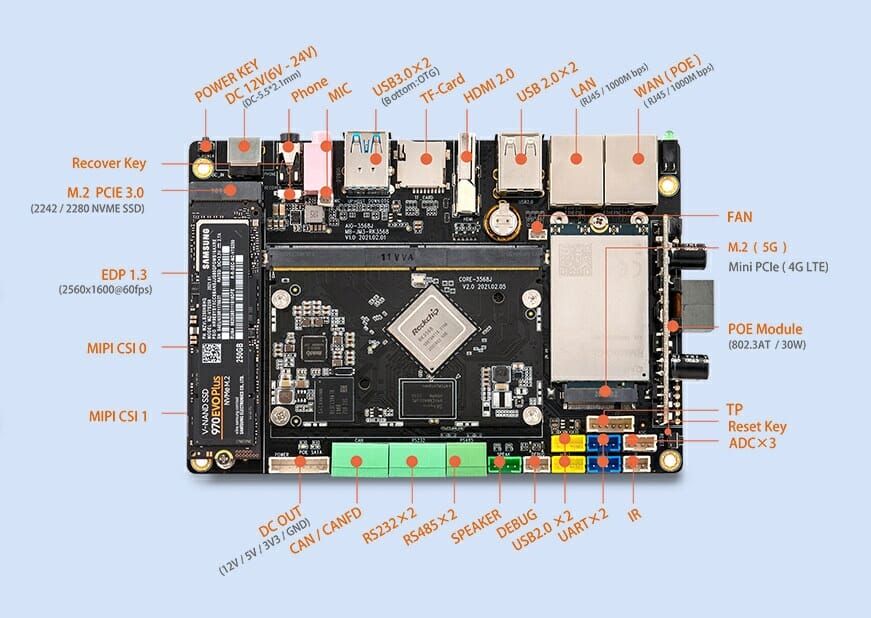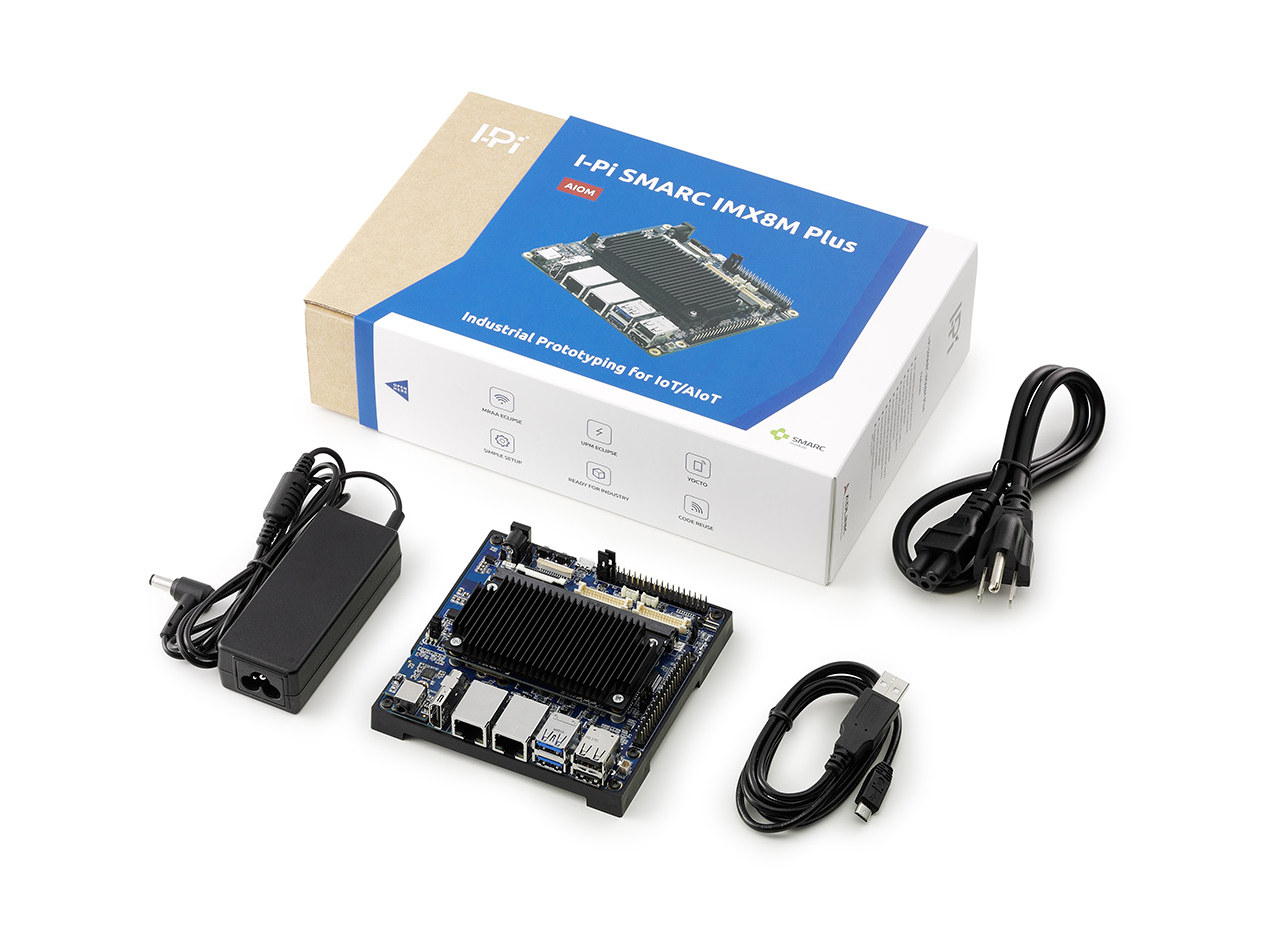We’ve seen a fair deal of Raspberry Pi CM4 carrier boards, and here’s another one courtesy of QwaveSystems with CatsPi Industrial Lite board following Raspberry Pi SBC form factor/dimensions, and equipped with Gigabit Ethernet, RS485, USB ports, as well as a watchdog MCU among other interfaces and features. Contrary to what the name implies, CatsPi Industrial Lite only works with Raspberry Pi CM4 with eMMC flash, but not the CM4 Lite module since there’s no MicroSD card on the baseboard. It’s not the first Raspberry Pi Compute Module 4 carrier board with RS485, however, as we previously covered CM Hunter also including CAN and 1-wire interfaces, but QwaveSystems’ solution is more compact and mostly mechanically compatible with Raspberry Pi model B SBC’s. CatsPi Industrial Lite board specifications: Compatible SoMs – Raspberry Pi CM4 with eMMC flash only Video Output – Micro HDMI port Connectivity – Gigabit Ethernet, optional 802.11b/g/n/ac WiFi […]
NEON-2000-JNX series AI Camera Features NVIDIA Jetson Xavier NX SOM for AIoT Applications
Machine vision applications highlight the complexity of implementation due to the requirement of interfacing several devices. These devices include image sensor modules, cables, GPU modules, and memory units, thus increasing the time for development and deployment. ADLINK’s NEON-2000-JNX series AI camera aims to simplify the deployment of edge machine vision and AIoT use cases. NEON-2000-JNX series AI camera comes with an inbuilt ADLINK’s new edge vision analytics software known as the EVA SDK. The software reduces the time in designing and creating proofs-of-concept, which leads to quicker deployment of applications. Users get a wide range of options for selecting field-ready “application plug-ins and ADLINK-optimized AI models”. This ensures the quality of vision AI and eases the building of use cases with lesser software code and programs. Additionally, the preview function allows quicker verification of AI Inference flow. We saw the launch of NVIDIA’s Jetson Xavier NX SOM in April 2020 […]
Antmicro ARVSOM offers StarFive JH71x0 RISC-V processor, Raspberry Pi CM4 compatibility
The Linux capable BeagleV SBC, now called “BeagleV Starlight”, was announced last January with a StarFive JH7100/JH7110 64-bit RISC-V processor, and developers and beta users have just started to get their hand on the board in recent days. But there’s another StarFive JH71x0 hardware in the works with Antmicro ARVSOM. The system-in-module will feature the dual-core RISC-V processor, and be compatible with Raspberry Pi CM4, and by extension Antmicro’s Scalenode server-oriented baseboard. The company did not provide the complete specifications for the module, but based on public information available, Antmicro ARVSOM should feature the following: SoC – StarFive JH7100 Vision SoC: RISC-V U74 dual-core with 2MB L2 cache @ 1.5 GHz Vision DSP Tensilica-VP6 for computing vision NVDLA Engine 1 core (configuration 2048 MACs @ 800MHz – 3.5 TOPS) Neural Network Engine (1024MACs @ 500MHz – 1 TOPS) VPU – H.264/H.265 decoder up to 4Kp60, dual-stream decoding up to 2Kp30 […]
Xilinx Introduces Kria K26 SoM and vision AI devkit based on Zynq Ultrascale+ XCK26 FPGA MPSoC
Silicon vendors will usually focus on chip design, and provide an expensive evaluation kit to early customers, leaving the design of cost-optimized boards and system-on-modules to embedded systems companies. But Xilinx has decided to enter the latter market with the Kria portfolio of adaptive system-on-modules (SOMs) and production-ready small form factor embedded boards starting with Kria K26 SoM powered by Zynq UltraScale+ XCK26 FPGA MPSoC with a quad-core Arm Cortex-A53 processor, up to 250 thousand logic cells, and a H.264/265 video codec designed for Edge AI applications, as well as computer vision development kit. Kria K26 System-on-Module Kria K26 module specifications: MPSoC – Xilinx Zynq Ultrascale+ custom-built XCK26 with quad-core Arm Cortex-A53 processor up to 1.5GHz, dual-core Arm Cortex-R5F real-time processor up to 600MHz, Mali-400 MP2 GPU up to 667MHz, 4Kp60 VPU, 26.6Mb On-Chip SRAM, 256K logic cells, 1,248 DSP slices System Memory – 4GB 64-bit DDR4 (non-ECC) Storage – […]
SGET OSM (Open Standard Module) compliant SoM features NXP i.MX 8M Mini SoC
The SGET (Standardization Group for Embedded Technologies) non-profit organization ratified another system-on-module standard last November, with the “Open Standard Module” (OSM) standard that instead of relying on edge or board-to-board connectors is meant to be soldered on the carrier board as a solder-on module LGA package. F&S Elektronik has unveiled one of the first SGET OSM compliant SoM with “FS 8MM OSM-SF” equipped with an NXP i.MX 8M Mini processor, up to 8GB DDR4, 32GB eMMC flash or 512MB NAND flash on a 30x30mm “Size-S OSM” form factor. FS 8MM OSM-SF system-on-module FS 8MM OSM-SF module specifications: SoC – NXP i.MX 8M Mini single, dual, or quad-core Arm Cortex-53 processor @ 1.8 GHz with real-time Cortex-M4 core @ 400 MHz, Vivante 2D & 3D GPU, 1080p60 H.265, VP9, H.264, VP8 video decoder System Memory – Up to 8GB LPDDR4 Storage – Up to max. 512MB SLC NAND flash or up […]
Zoom i.MX 8M Mini Development Kit supports power usage monitoring
NXP i.MX 8M Mini 14nm Cortex-A53/M4 processor has been around for a couple of years, and several SoM-based development kits are available including Variscite Symphony starter kit, HummingBoard Ripple SBC, or congatec conga-SEVAL007010 evaluation board. Beacon EmbeddedWorks’ Zoom i.MX 8M mini development kit is based on the company’s i.MX 8M Nano System on Module (SOM) and offers features not found on most other devkits or single board computers such as power usage monitoring and control through their Wattson power measurement application. Zoom i.MX 8M mini development kit key features & specifications: System-on-Module SoC – NXP i.MX 8M Mini processor with up to four Arm Cortex-A53 cores @ up to 1.8 GHz, an Arm Cortex-M4 real-time core at up to 400 MHz, Vivante 3D & 2D GPU’s System Memory – Up to 8GB of 32-bit wide LPDDR4 memory Storage – eMMC flash, QSPI NOR flash Networking Gigabit Ethernet PHY Wireless module […]
Firefly unveils Core-3568J AI Core Rockchip RK3568 system-on-module & devkit
Firefly has unveiled a new 314-pin SO-DIMM system-on-module (SoM) with Core-3568J AI Core powered by Rockchip RK3568 processor and equipped with up to 8GB RAM, 128GB eMMC flash with interfaces including PCIe, SATA, dual Gigabit Ethernet, HDMI 2.0, eDP 1.3, MIPI DSI and more. The company also provides AIO-3568J development kit for the module with all those interfaces plus an M.2 socket for 5G or WiFi 6 connectivity, and PoE support among other features. Core-3568J AI Core system-on-module Specifications: SoC – Rockchip RK3568 quad-core Cortex-A55 processor @ 2.0 GHz with Arm Mali-G52 2EE GPU with support for OpenGL ES 1.1/2.0/3.2, OpenCL 2.0, Vulkan 1.1, 0.8 TOPS NPU for AI acceleration, 4Kp60 H.265/H.264/VP9 video decoding, and 1080p100 H.265/H.264 video encoding System Memory – 2GB, 4GB, or 8GB LPDDR4 ECC RAM up to 1600 MHz Storage – 32GB, 64GB, or 128GB eMMC flash 314-pin SO-DIMM edge connector with: Storage – SATA 3.0 […]
ADLINK launches SMARC Short Size Module, Devkit with NXP i.MX 8M Plus
We had seen many i.MX 8M Plus modules with built-in AI accelerator announced at Embedded World 2021, including two SMARC modules from Congatec and iWave Systems. ADLINK has added another of i.MX 8M Plus module compliant with SMARC 2.1 “short” standard with LEC-IMX8MP system-on-module equipped with up to 8GB RAM, 128 GB eMMC flash, as well as a development kit called I-Pi SMARC IMX8M Plus prototyping platform. LEC-IMX8MP module specifications Specifications: SoC – NXP i.MX8M Plus with quad-core ARM Cortex-A53 processor, Vivante GC380 2D GPU and GC7000UL 3D GPU, 1080p60 video decoder & encoder, optional 2.3 TOPS Neural Processing Unit (NPU) System Memory – 2/4/8GB LPDDR4L-4266 Storage – 16, 32, 64, or 128GB eMMC flash (build option) Wireless – Optional 802.11 ac/a/b/g/n WiFi 5 2X2 MIMO and Bluetooth 5.0 module 314-pin MXM 3.0 edge connector Storage – 1x SDIO (4-bit) compatible with SD/SDIO standard, up to version 3.0 Display – […]


